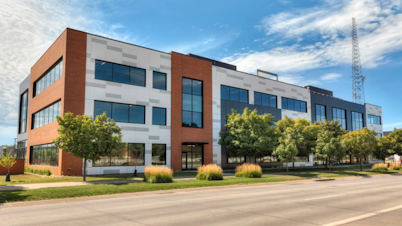
Network Security in an IoT-Based BMS
In an age where cyber threats are increasingly sophisticated and pervasive, how do we make our buildings smarter and more efficient while prioritizing evolving security measures? To answer these sorts of questions in a straightforward and understandable way, 75F developed the O.R.A.N.G.E security framework. In this post, we're exploring the “N” in our framework, which stands for “Network Security.”

The importance of a robust network security strategy cannot be understated. To understand the weight of network security for a Building Management System (BMS), consider this: every function, every data transfer, every temperature adjustment, and every energy-saving protocol happens via our network. This interconnected web not only commands the operations, but also holds the building data of our clients and their tenants. Thus, a robust network security mechanism is a necessity.
Read on to explore how our authentication systems, secure network architecture, load balancing, traffic encryption, and 900 MHz wireless mesh network work together to safeguard building data and operations.
Key Features of Network Security
Authentication Systems:An authentication system's role is straightforward: monitor and guard the network, our platform, and all its components against any unauthorized access. By continuously scanning for suspicious activities or anomalies, we prevent breaches by making sure no user without explicit access can enter the system.
Secure Network Architecture and Load Balancing:Beneath the surface of our system lies a carefully designed network architecture. This blueprint not only supports critical systems and data but also ensures that resources are used optimally. With strategic load balancing, we ensure that even during times of high demand, our system works without any issues to provide uninterrupted service.
Traffic Encryption and Secure Protocols:As data travels across our network, it's crucial to shield it from prying eyes. Data communications within our platform is proprietary in nature, so it is difficult for others to decipher. We ensure appropriate encryption modes are put in place across all our network layers.
Proprietary 900 MHz Wireless Mesh Network:For all wireless communications across our systems, we use a 900 MHz wireless mesh network using a proprietary data format. It's designed for consistent, robust, and secure device communication. With this, we can maintain continuous coverage that is protected from outside understanding.
As pioneers in the realm of IoT-based Building Management Systems, it's our responsibility to take care of building data and lead by example. Because the security landscape constantly evolves, we regularly examine our strategies and make updates to ensure our system is the most secure it can be with processes like annual rigorous VAPT testing.
Today, you've learned some of the details of our network security and the ways in which we make building operations not just efficient and smart, but also secure. Stay tuned for our next post, where we'll explore the 'G' in O.R.A.N.G.E — Gateway Security.











